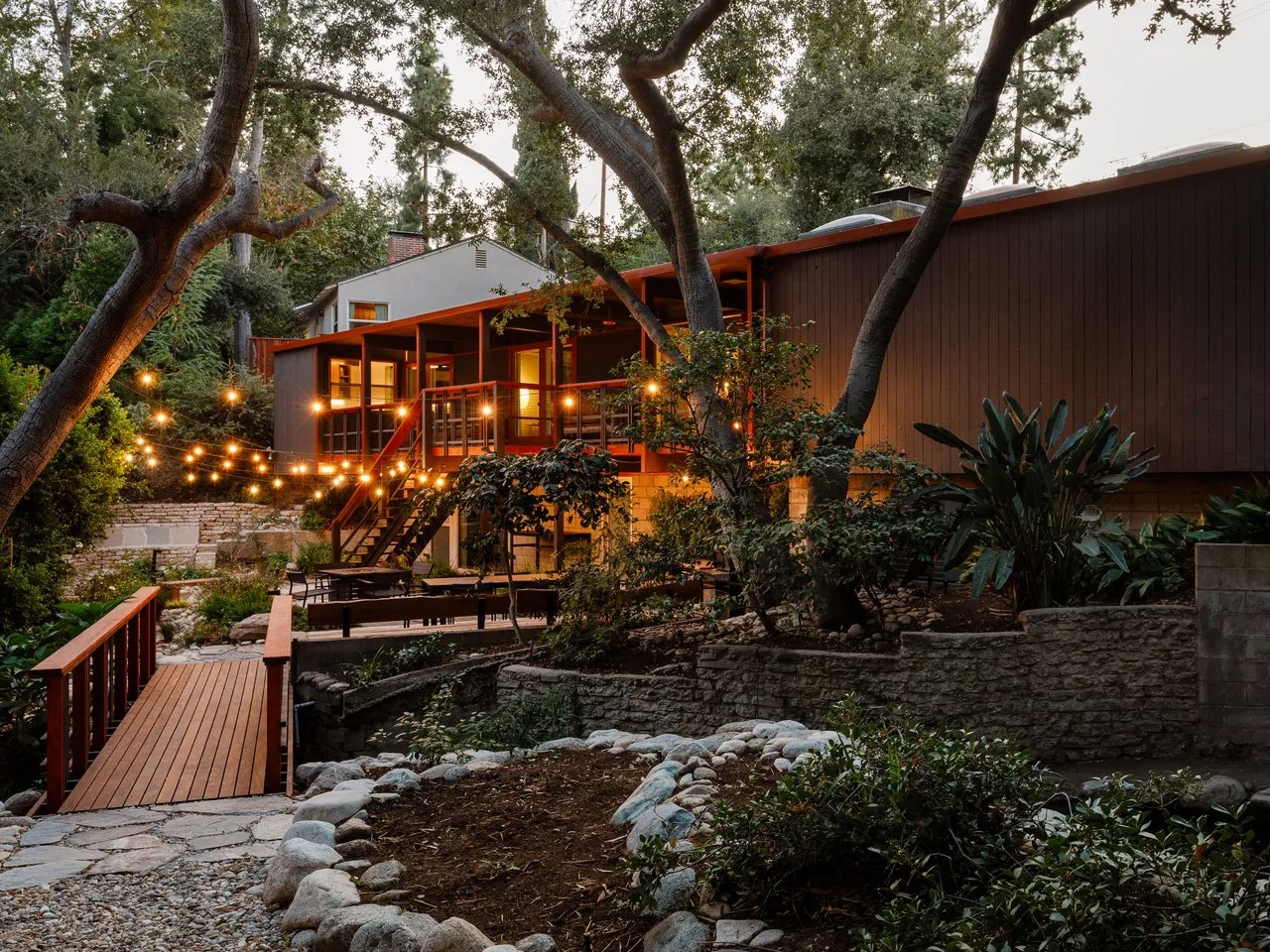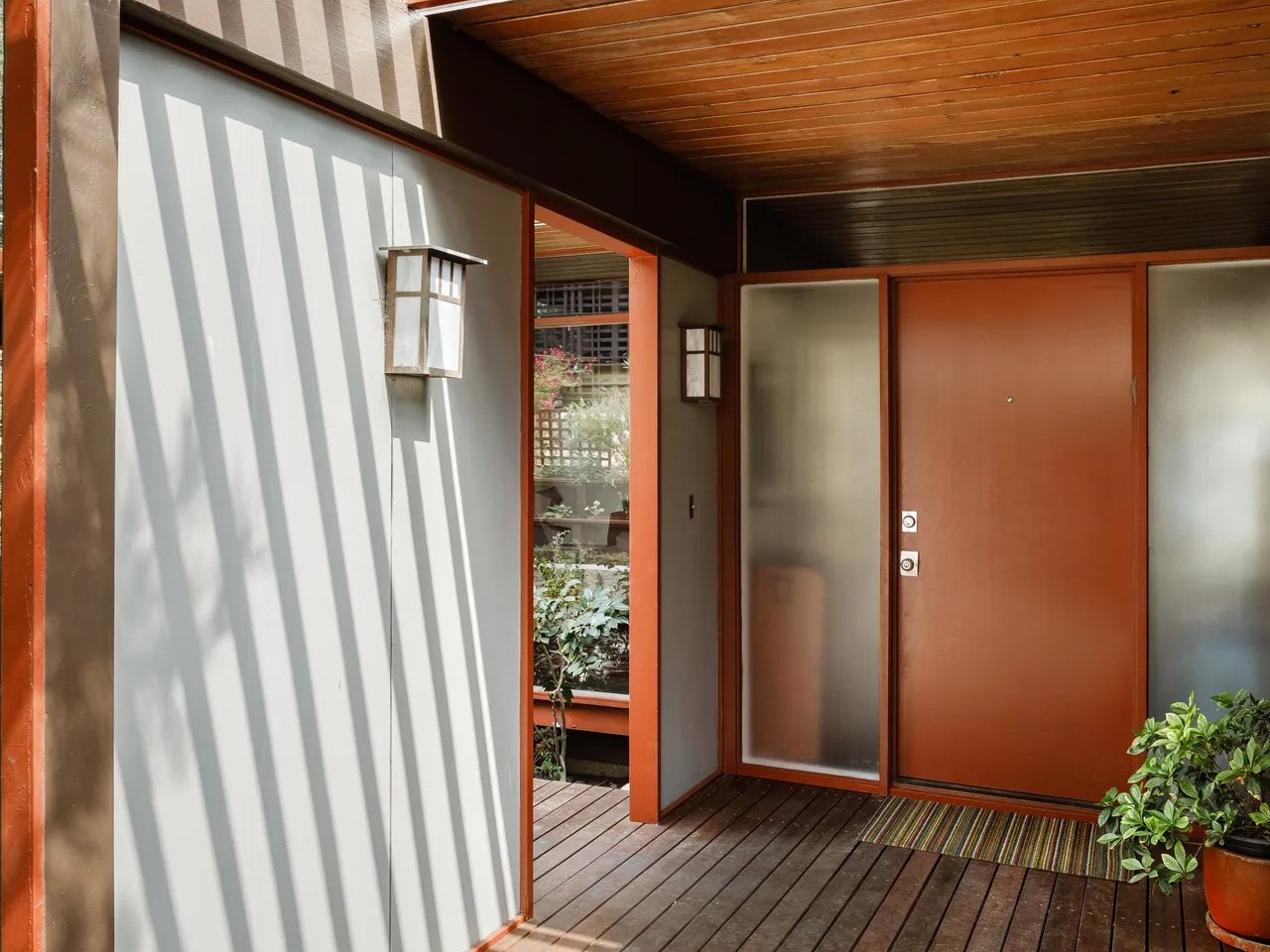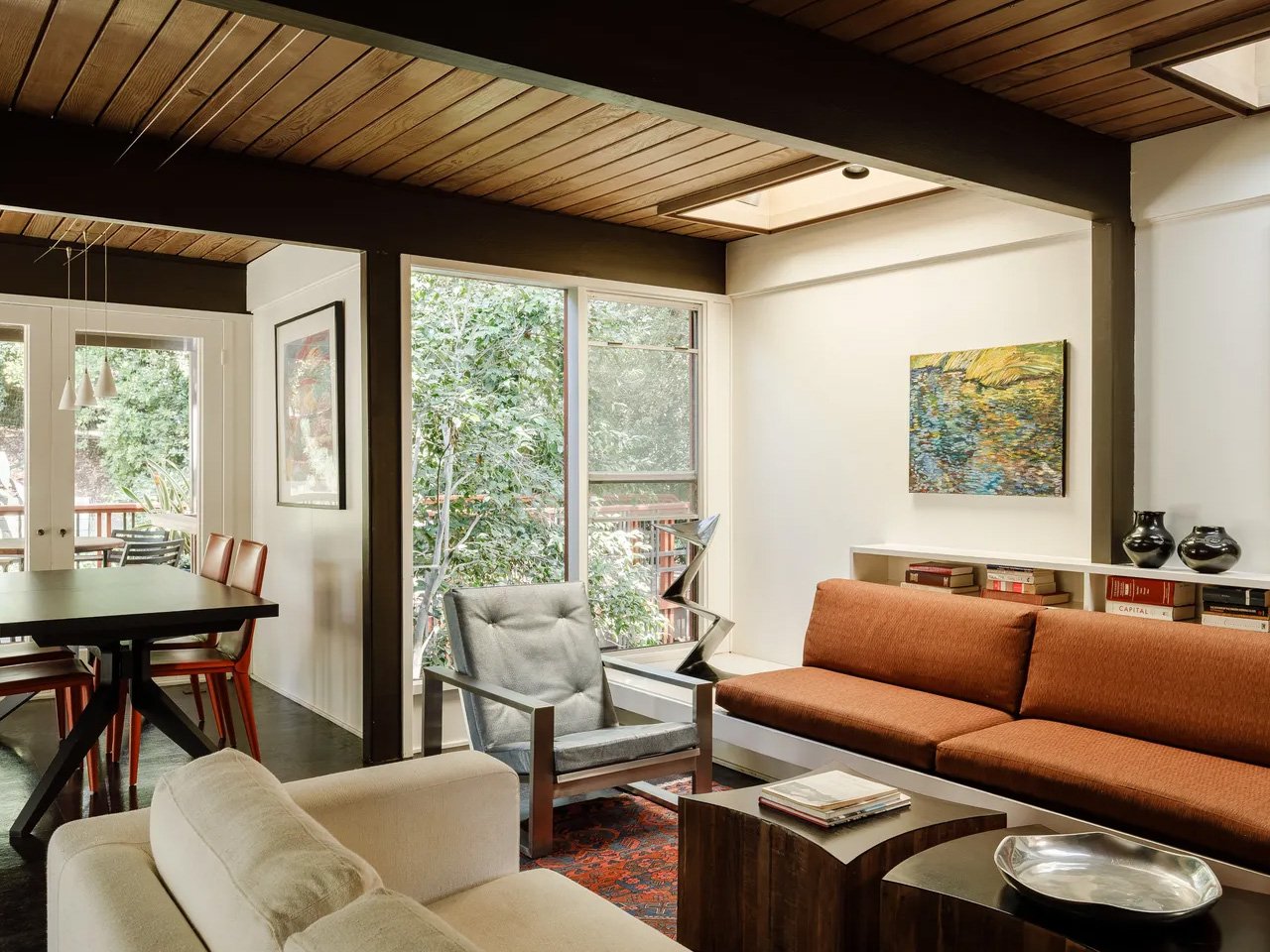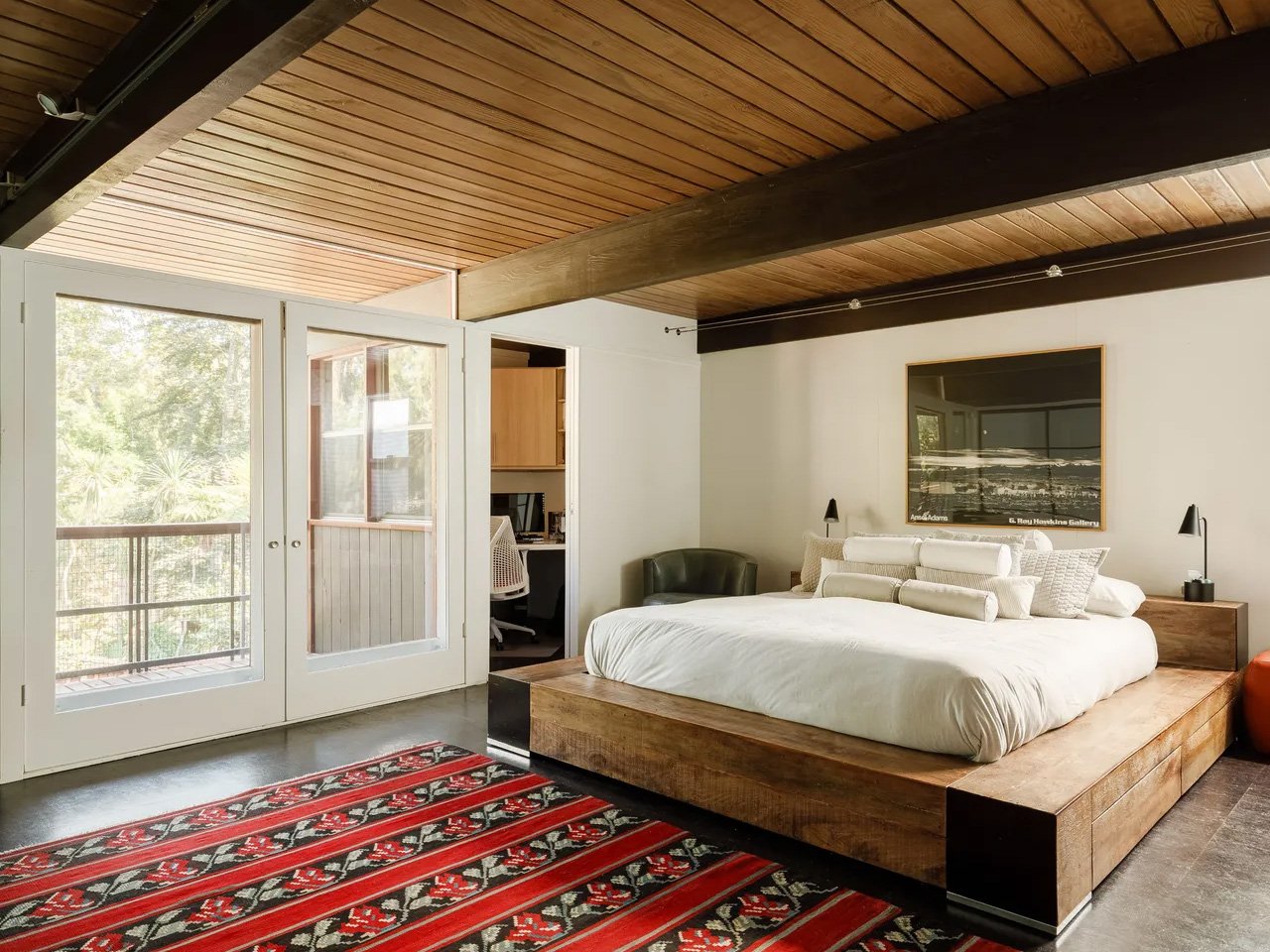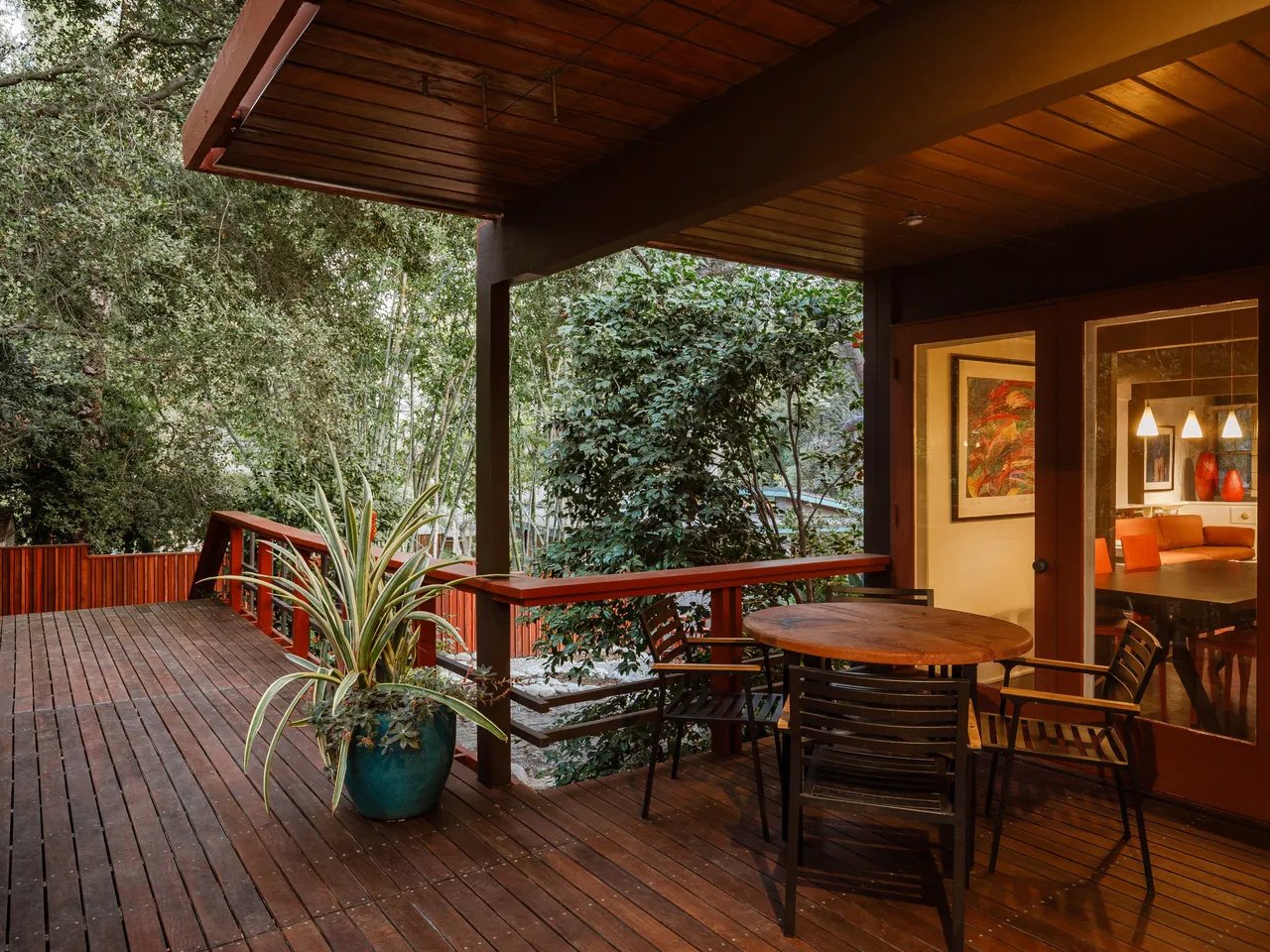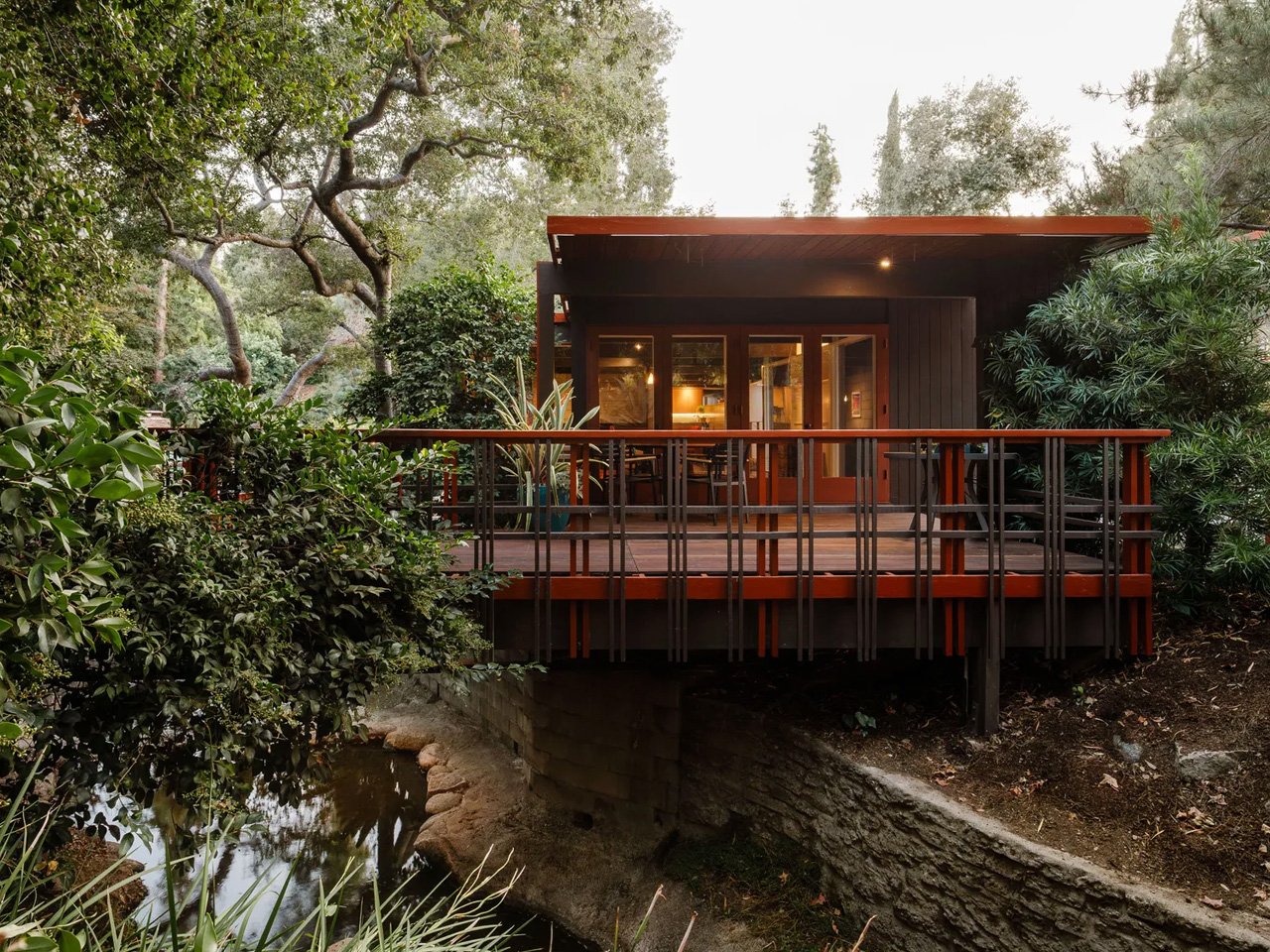
The Norton House stands as proof that the most compelling architecture emerges from the most challenging sites. Built in 1954 along 820 Burleigh Drive in southwest Pasadena, this Buff, Straub & Hensman creation transforms what could have been an insurmountable obstacle into its greatest asset—a natural spring-fed creek flowing directly through the property.
Oil engineer Jack Norton and his wife, Laurel, a local political activist, commissioned the acclaimed architectural firm to design their dream home on a wooded downhill lot that most builders would have dismissed as impossible. The stream presented a unique puzzle: how to create a livable space while honoring the natural water flow that had carved this gully for decades.
Designer: Buff, Straub & Hensman
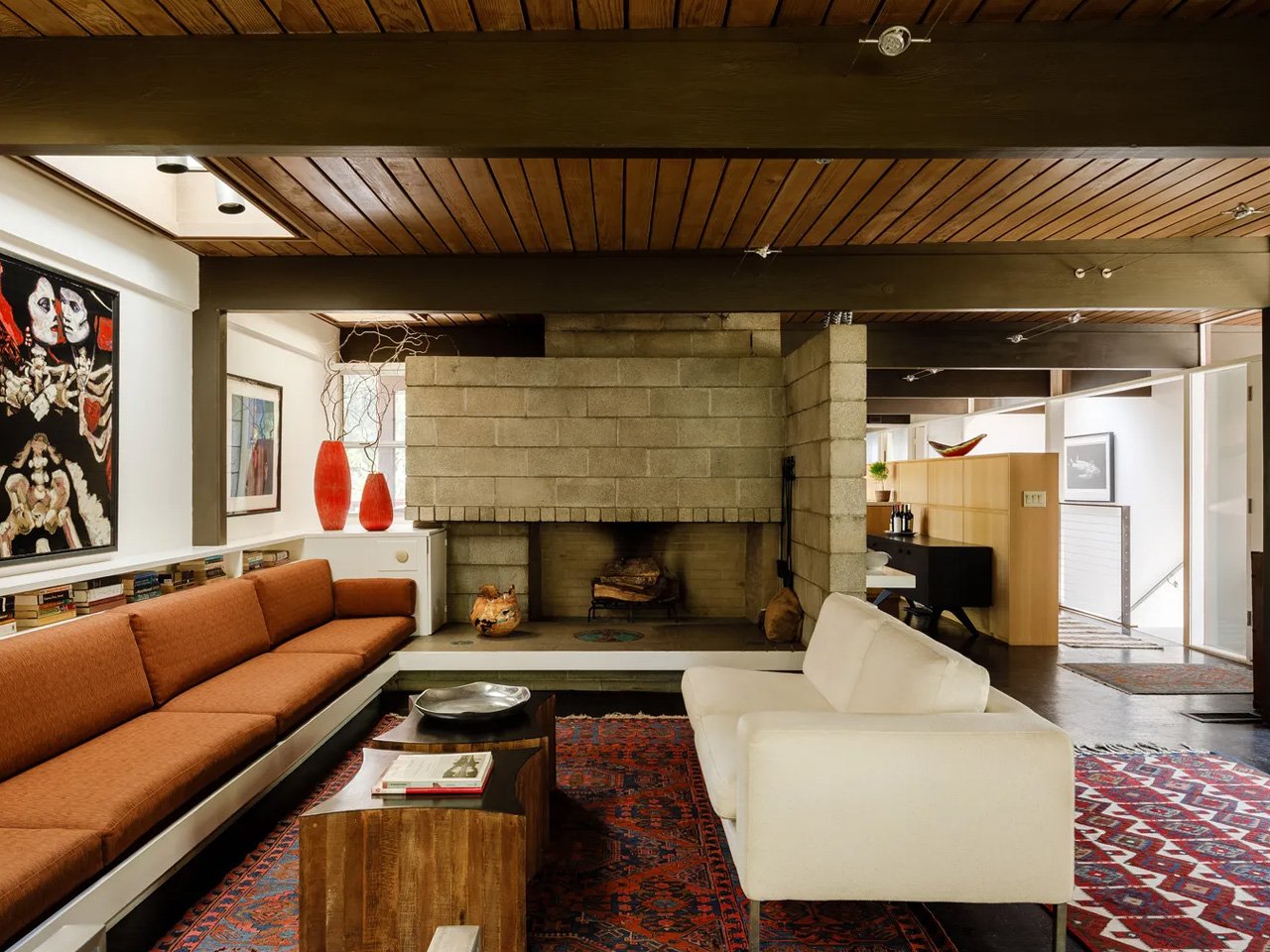
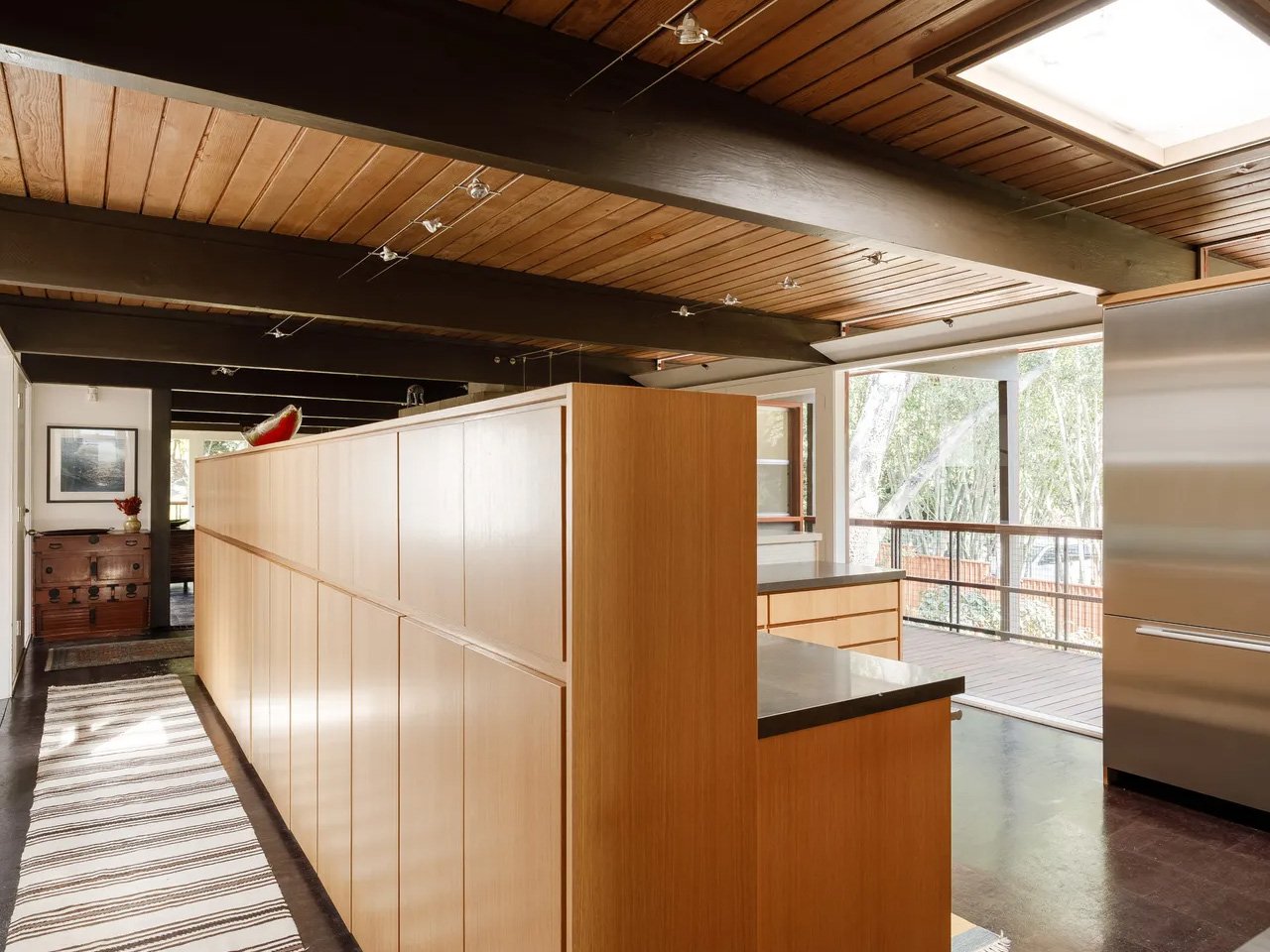
Conrad Buff, Calvin Straub, and Donald Hensman responded with architectural poetry. Their solution embraces the stream rather than fighting it, creating a lightweight residence that seems to float above the water. The 2,564-square-foot house employs classic post-and-beam construction using Douglas fir, allowing for open-plan living areas and expansive glass walls that dissolve the boundaries between interior and exterior spaces. Carefully positioned terraces, decks, and bridges don’t merely accommodate the stream—they celebrate it, with every room oriented to capture views of the flowing creek, ornamental ponds, and mature trees beyond.
Built by the Norton family themselves under architectural supervision at a cost of just $11,500, the house exemplifies the postwar California dream of affordable modernism. A floor-to-ceiling concrete block fireplace serves as both a focal point and a room divider, anchoring the floating structure while maintaining visual flow throughout the main level. The original cork flooring, built-in seating, and mosaic tile backsplash remain intact, a testament to both the quality of the original design and the care of subsequent owners.
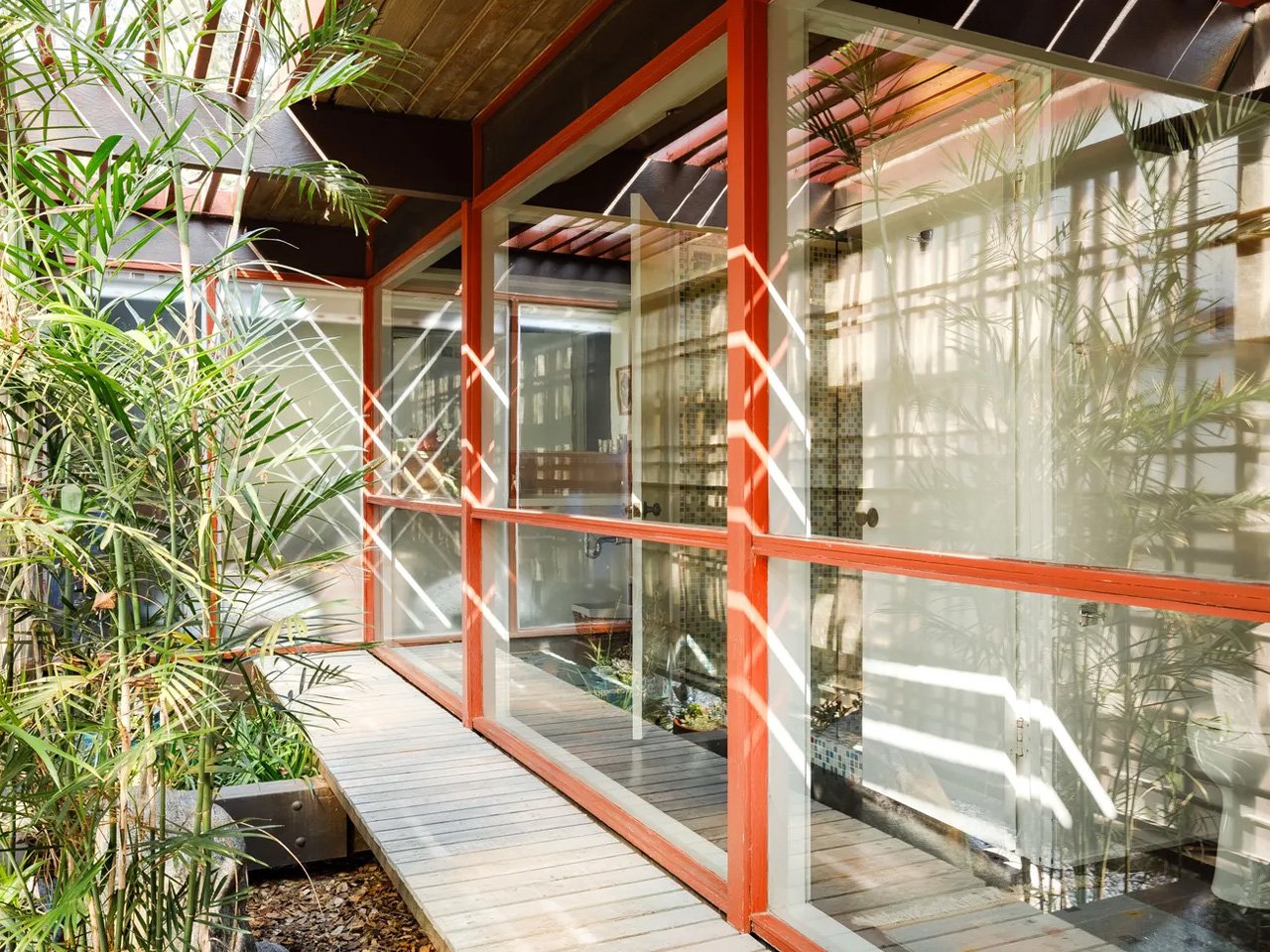
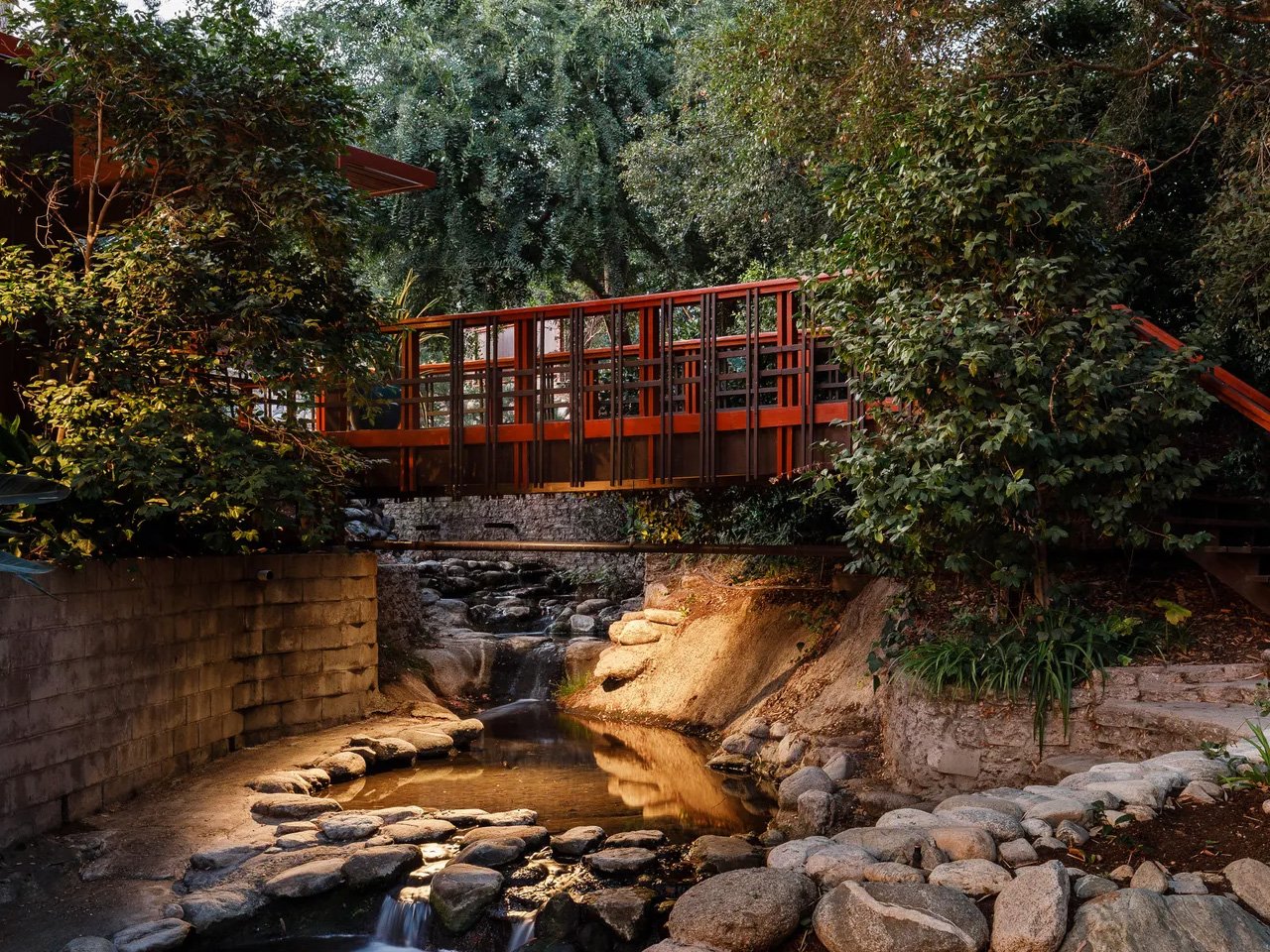
Sunset Magazine featured the house in 1958, recognizing its innovative approach to site-specific design. The architectural community took note as well—the Norton House became a defining example of how modernist principles could address challenging topography while creating deeply livable spaces. Its significance earned official recognition in 2009 when it was added to the National Register of Historic Places. Current owners Glenn and Maggie Rothner purchased it in 2011 for $1.31 million, drawn by their teenage son’s immediate recognition that this was “it”—the perfect family home.
Now listed for $2.75 million, the Norton House represents more than real estate—it’s a masterclass in responsive architecture. At a time when many modernist homes feel cold or disconnected from their surroundings, the Norton House demonstrates how thoughtful design can enhance both natural beauty and daily life. The stream continues its ancient flow, now witnessed by architecture that doesn’t interrupt its journey but joins it, creating spaces where human habitation and natural systems exist in perfect harmony. This is modernism at its most humane—not imposed upon the landscape but growing from it.
